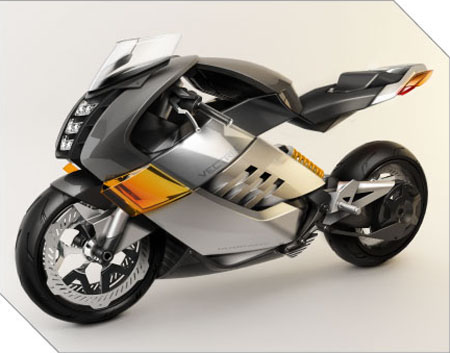 Renault took advantage of the Annual General Meeting of its shareholders today in Paris, France, to unwrap a more production-like version of its Kangoo Be Bop Z.E. concept that was first seen at the 2008 Paris Motor Show. What's really significant about this new prototype is that it features technology very similar to what will be used on the first all-electric Nissan vehicle due to be launched in the USA and Japan in 2010 and the rest of the world from 2012, as well as the equivalent Renault EVs in 2011, beginning with a family saloon in Israel, and a utility version of New Kangoo in Europe.
Renault took advantage of the Annual General Meeting of its shareholders today in Paris, France, to unwrap a more production-like version of its Kangoo Be Bop Z.E. concept that was first seen at the 2008 Paris Motor Show. What's really significant about this new prototype is that it features technology very similar to what will be used on the first all-electric Nissan vehicle due to be launched in the USA and Japan in 2010 and the rest of the world from 2012, as well as the equivalent Renault EVs in 2011, beginning with a family saloon in Israel, and a utility version of New Kangoo in Europe.
 Derived from the production Kangoo Be Bop, the Z.E. (short for Zero Emissions) is powered solely by a 44kW (60HP) electric motor that revs to 12,000rpm and is coupled to a reducer which replaces the traditional gearbox.
Derived from the production Kangoo Be Bop, the Z.E. (short for Zero Emissions) is powered solely by a 44kW (60HP) electric motor that revs to 12,000rpm and is coupled to a reducer which replaces the traditional gearbox.
The system deploys a set of lightweight and compact-sized lithium-ion batteries produced by AESC (Automotive Electric Supply Corporation), a Nissan-NEC joint venture which was founded in April 2007. Thanks to their compact size, the batteries can be positioned in various places in the car. In the case of the Be Bop, the batteries are located underneath the dashboard. Renault claims that the AESC battery pack is expected to deliver between 80 and 100 per cent of its original capacity for a duration of six years.
In the Kangoo prototype, the 15kWh battery delivers a range of approximately 100km or 62miles, but the French automaker supports that when released, the production Renault and Nissan electric vehicles will profit from an evolution to their battery technology which will take their real-world range to 160km or about 100 miles.
 The batteries are charged through socket located behind a flap at the front of the vehicle alongside the right-hand headlamp. The cable plug allows two different battery-charging modes, a conventional charge via a household mains supply (10A or 16A 220V) that takes between six to eight hours and the so-called quick charge using a 32A 400V three phase socket, enabling up to 80 per cent charge in around 30 minutes.
The batteries are charged through socket located behind a flap at the front of the vehicle alongside the right-hand headlamp. The cable plug allows two different battery-charging modes, a conventional charge via a household mains supply (10A or 16A 220V) that takes between six to eight hours and the so-called quick charge using a 32A 400V three phase socket, enabling up to 80 per cent charge in around 30 minutes.
However, Renault said that it is also working with the German group RWE to develop a universal standard, three phase plug that can be used with a 400V supply and will enable a complete charge in just 20 minutes.
To further improve the Kangoo's efficiency, the latest Be Bop Z.E. prototype benefits from a series of measures that include reworked aerodynamics with the ground clearance lowered by 20mm compared to the standard model. Unique features on the prototype include linear displays on the exterior part of the doors that show how much charge is left in the battery while inside, a gauge to the left of the instrument panel provides the driver with a permanent indication of how much battery charge remains.
source: http://carscoop.blogspot.com



















0 comments:
Post a Comment